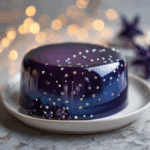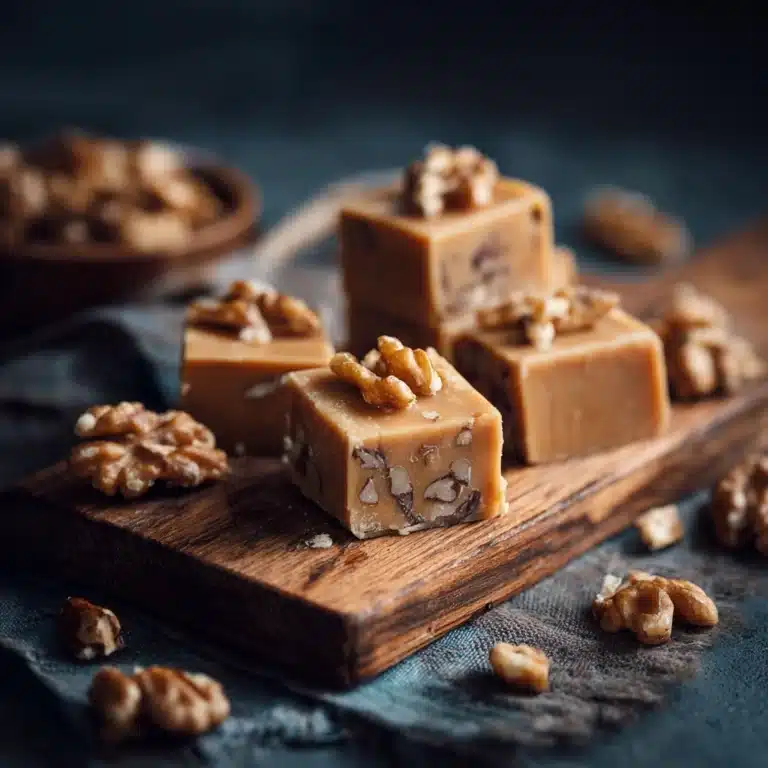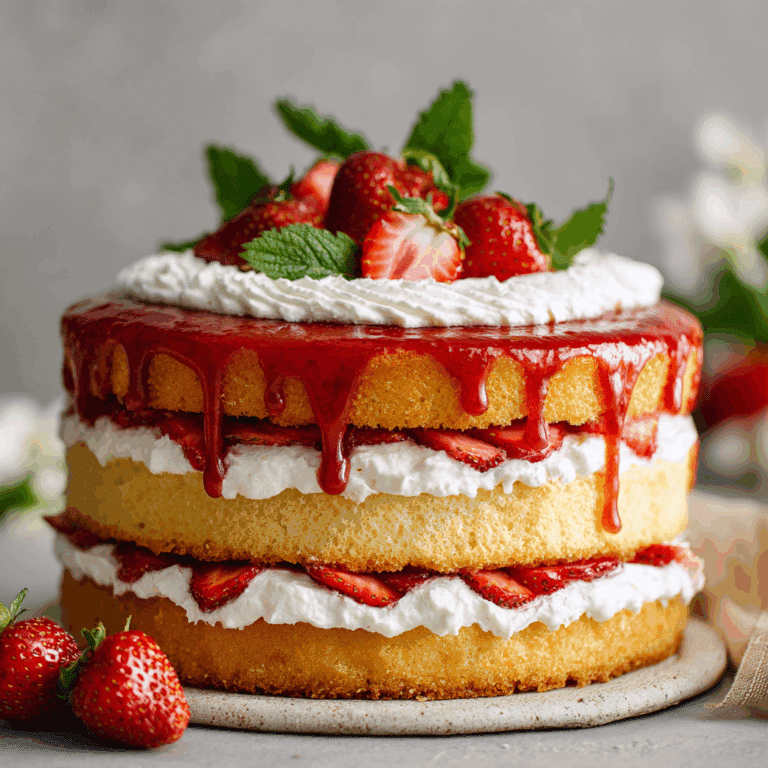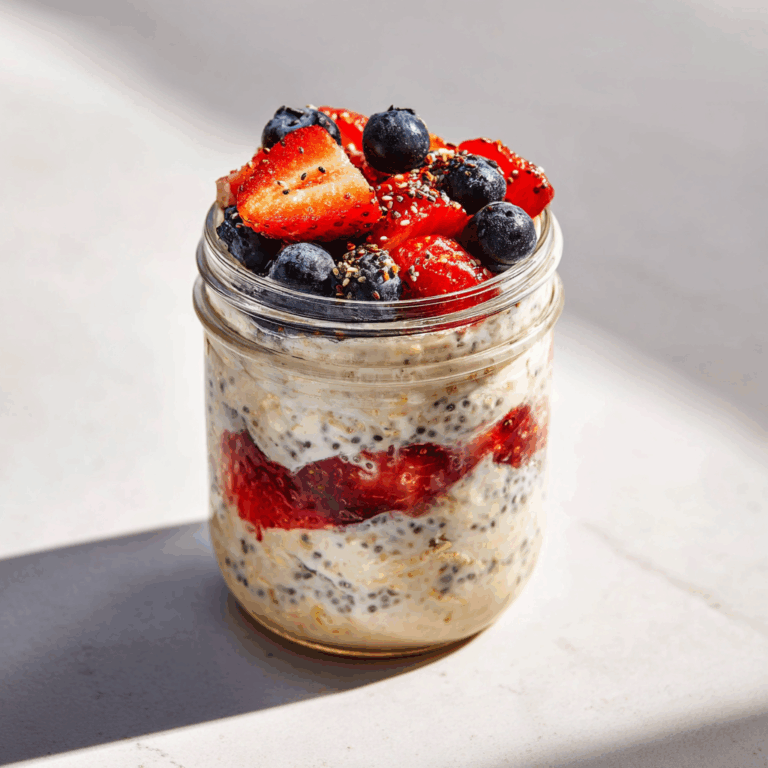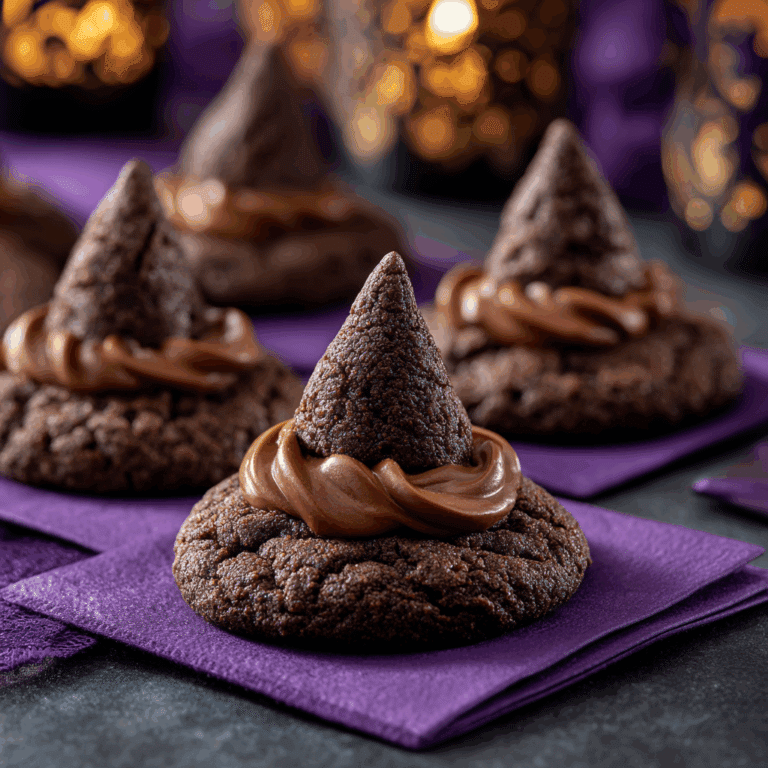Galaxy Mirror Glaze Cake
A Galaxy Mirror Glaze Cake is a show-stopping dessert: layers of soft cake (often with mousse or buttercream), frozen or thoroughly chilled, beautifully draped in a highly reflective glaze that swirls galaxy‑like colors across its surface. The finished look evokes stars, nebulae, deep space—shiny, dramatic, and elegant.
Why You’ll Love This Recipe
-
Striking visual impact: everyone will be amazed by the mirror‑finish and galactic color swirls.
-
Great contrast of textures: silky glaze, moist cake or mousse, possibly a crunchy base.
-
Versatile: you can adapt cake flavor (chocolate, vanilla, etc.), color scheme, and decorations to suit occasions.
-
Once you master the glaze, it becomes a fun technique to reuse for other desserts (e.g. mousse cakes, small domes).
Ingredients
(Tip: You can find the complete list of ingredients and their measurements in the recipe card below.)
-
Unflavoured powdered gelatin
-
Water (for blooming gelatin + for glaze base)
-
Granulated sugar
-
Light corn syrup
-
Sweetened condensed milk
-
White chocolate (chopped or quality chocolate that melts well)
-
Gel food coloring (various colors: blue, purple, pink, black, white)
-
Cake layers (e.g. chocolate cake, vanilla cake) or mousse (e.g. chocolate mousse)
-
Optional: crispy or brownie base
-
Optional decorations: edible glitter, star sprinkles, etc.
Directions
-
Prepare your cake or mousse base.
Bake your cake layers and cool completely. If using mousse, assemble mousse over base (e.g. brownie or cake) and freeze or chill until firm. -
Chill thoroughly.
The cake or dessert must be very cold or frozen; this helps the glaze set immediately upon contact and prevents it from sliding off. -
Bloom the gelatin.
Mix gelatin with cold water and let it sit to absorb (“bloom”) for a few minutes until settled. -
Make the glaze base.
In a saucepan, combine sugar, corn syrup, and water. Heat until sugar dissolves, bring to a boil or appropriate temperature (often around 95‑100 °C / ~203‑212°F in some versions), then remove from heat. -
Add gelatin and condensed milk.
Stir in the bloomed gelatin until fully dissolved. Then stir in sweetened condensed milk. -
Pour over white chocolate.
Pour the hot mixture over chopped white chocolate. Let sit briefly, then whisk until the chocolate is completely melted and the mixture is smooth. Optionally use an immersion blender to remove lumps and to smooth out texture. -
Divide and colour.
Split the glaze into several bowls. Add gel food coloring to create different shades (e.g. dark blue, purple, a touch of black, bright white, pink). Keep some portions lighter/whiter for highlights. -
Cool to pouring temperature.
Let the glaze cool until it is warm but not hot, usually around 85‑95°F (about 29‑35°C) depending on recipe. The glaze should coat a spoon and flow but not be so hot that it runs off immediately. -
Pour onto the chilled cake.
Place the cake or mousse dessert on a rack over a tray to catch excess. Pour glaze over centre, letting it run outward and down the sides. Use some of the colored glazes to drizzle or swirl for galaxy effects. -
Let set.
Allow the glaze to drip off and settle, then remove excess drips from cake board. Chill for a while to fully set before serving. -
Decorate (optional).
Add edible glitter, star sprinkles, or metallic accents while glaze still slightly wet for sparkle.
Servings and timing
-
Servings: One 8‑inch round cake usually serves 8‑12 people, depending on slice size. If using mousse domes or small individual portions, yield varies accordingly.
-
Timing: Total time is about 4 to 5 hours, including chilling/freezing. Active prep is around 1 to 1½ hours; rest is for setting, cooling, freezing, etc.
Variations
-
Use different base flavours: chocolate, vanilla, red velvet, or even fruit‑infused cakes.
-
Swap out mousse for buttercream or use both layers.
-
Experiment with color schemes: e.g. Aurora Borealis (greens, teals), sunset (oranges, pinks), monochrome metallic.
-
Add texture: a crunchy layer, bits of fruit, or even edible metallic dust for shimmer.
-
Use molds (half‑sphere, domes) for individual servings rather than a full cake.
storage/reheating
-
Once glazed and set, store cake in the refrigerator, ideally in a cake container to prevent drying and absorption of fridge odors.
-
If made ahead, you can freeze the mousse or cake base before glazing; glaze just before serving.
-
If glaze becomes dull, you cannot really rehear to restore “shine” without affecting texture; best to serve within 24‑48 hours.
-
Leftover glaze (if any) can be stored in an airtight container in the fridge; reheat gently in short bursts (e.g. microwave or warm water bath) to about pouring temperature before reuse.
FAQs
What kind of cake or filling works best under a mirror glaze?
Any cake works, but very smooth surfaces (buttercream, mousse) give the best mirror effect. Rough or textured frostings may show texture through the glaze.
How cold does the Cake need to be before glazing?
Very cold. Either thoroughly chilled in fridge or frozen. The colder the cake, the better the glaze sets. If the dessert is too warm, glaze may run off or lose mirror finish.
What is gel food coloring, and why use it?
Gel food coloring is concentrated, giving vibrant colors without adding much liquid. Liquid colorings dilute the glaze and can affect texture and consistency.
Can I make the mirror glaze ahead of time?
Yes, you can make the glaze ahead, store it refrigerated, and reheat to the proper temperature before using. But glaze should be used soon so it doesn’t form skin or lose gloss.
Why did my glaze lose its shine or become dull?
Possible reasons: too cool when poured, moisture (condensation) on the cake surface, or storing in humid or very cold fridge causing condensation. Proper temperature and handling helps retain the mirror finish.
What temperature should the glaze be when pouring?
Usually around 85‑95°F (29‑35°C), though exact figure can vary by recipe. It should be warm enough to flow but not so hot that it melts underlying frosting or slides off.
Can I use white chocolate chips instead of a block of chocolate?
You can, but white chocolate chips often have stabilizers and extra fats that might affect melt and finish. A good quality white chocolate bar gives a smoother, more glossy result.
How many colors should I use to get a galaxy look?
Typically 3‑5 colors work well: a dark base (deep blue or black), some mid tones (purple, lighter blue), and highlights (white or bright, maybe a touch of pink). Swirl carefully so colors don’t mix into a muddy brown.
Do I need special tools?
Not strictly, but helpful ones include: an instant‑read thermometer, silicone molds if doing domes, a rack and tray to catch drips, spatulas, and smooth frostings or mousse.
How do I cut the cake without damaging the glaze?
Use a sharp knife warm under hot water, wipe clean between cuts. Let the cake sit at room temperature briefly (10‑15 minutes) before slicing to avoid cracking the glaze.
Conclusion
The Galaxy Mirror Glaze Cake is a dessert that combines artistry and baking skill. With its glossy, reflective finish and swirling cosmic colors, it makes a dramatic statement for birthdays, special occasions, or any time you want to impress. Though it requires patience (cooling, chilling, freezing), the reward is both beautiful and delicious. Once you get the technique down, it becomes a go‑to showpiece dessert. Let your creativity with color and flavor shine through, and enjoy the process as much as the result.
Galaxy Mirror Glaze Cake
A stunning Galaxy Mirror Glaze Cake featuring a shiny, reflective glaze in swirling cosmic colors over a smooth mousse or ganache-coated cake.
- Author: sarra
- Prep Time: 1 hour
- Cook Time: 30 minutes
- Total Time: 1 hour 30 minutes
- Yield: 1 cake (8–10 servings) 1x
- Category: Dessert
- Method: Chilling and Pouring
- Cuisine: Modern
- Diet: Vegetarian
Ingredients
- 1 box chocolate cake mix (plus ingredients listed on box)
- 2 cups heavy cream
- 16 oz white chocolate, finely chopped
- 14 oz sweetened condensed milk
- 1/2 cup water (for blooming gelatin)
- 2 1/2 tbsp powdered gelatin
- 3/4 cup water (for glaze mixture)
- Gel food coloring (black, blue, purple, pink, white)
- Edible glitter or stars (optional)
Instructions
- Bake the chocolate cake according to the package instructions. Let cool completely and level the layers.
- Prepare a smooth surface for the cake by covering it in a thin layer of ganache or mousse. Freeze the cake until firm.
- Bloom gelatin in 1/2 cup cold water and set aside for 5-10 minutes.
- In a saucepan, combine sweetened condensed milk, 3/4 cup water, and sugar (if desired). Bring to a gentle simmer.
- Remove from heat and stir in the bloomed gelatin until dissolved.
- Pour the mixture over the chopped white chocolate and let sit for 5 minutes. Stir until smooth and fully melted.
- Use an immersion blender to remove bubbles and smooth the glaze.
- Divide the glaze into separate bowls and add gel food coloring to create galaxy colors.
- Let the glaze cool to about 90°F (32°C) for optimal pouring consistency.
- Place the frozen cake on a wire rack over a tray. Simultaneously pour the colored glazes over the cake in swirling motions to create the galaxy effect.
- Optional: Add white food coloring drops and drag with a toothpick to create stars or use edible glitter.
- Let the glaze drip and set for 10-15 minutes before trimming edges and transferring to a serving plate.
Notes
- Ensure the cake is very cold before pouring the glaze for best results.
- Use high-quality gel colors for vibrant hues that don’t bleed.
- Strain the glaze before pouring to avoid lumps or bubbles.
- Refrigerate the cake until ready to serve.
Nutrition
- Serving Size: 1 slice
- Calories: 450
- Sugar: 45g
- Sodium: 210mg
- Fat: 25g
- Saturated Fat: 15g
- Unsaturated Fat: 8g
- Trans Fat: 0g
- Carbohydrates: 52g
- Fiber: 1g
- Protein: 5g
- Cholesterol: 60mg
Keywords: galaxy cake, mirror glaze, shiny cake, dessert, party cake, birthday cake, galaxy theme

